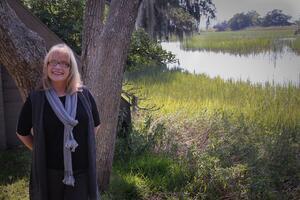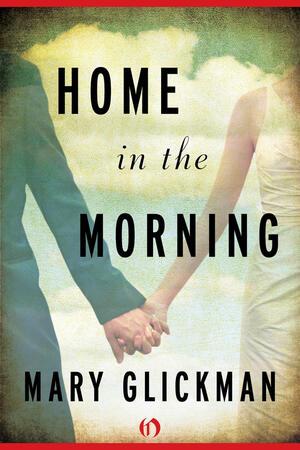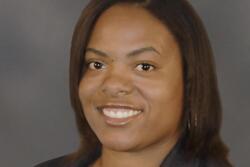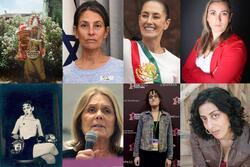Interview with Mary Glickman: Enthralling Author, Charming Mensch (Part I)
Mary Glickman is a writer, public relations professional, and fundraiser who has worked with Jewish charities and organizations. Glickman writes about the Southern-Jewish experience in her bestselling, debut novel Home in the Morning, as well as in her latest book, One More River, which earned her the 2011 National Jewish Book Award Finalist in Fiction. We were able to catch a moment with this delightful woman who demonstrates the essence of Southern charm.
In regards to Home in the Morning: How did the story come to you? How did you arrive at the story?
A few years ago while I was living up North, an op-ed appeared in the Boston Globe. The author had visited Charleston, South Carolina and complained that the docent of the Confederate Museum was not apologetic enough about a lack of African American visitors. He said: “One misses a clear pronunciation to visitors and locals alike that, for the record, slavery was bad.”
I got upset. In 1988–89 my husband and I spent a sabbatical year in Charleston, South Carolina with the ardent wish to return to the Holy City permanently. While living there, I witnessed a profound difference between race relations in the North and the New South. Given the horrors of slavery and the Jim Crow era, it puzzled me to find an ease of relations between the races down South. Blacks and whites were comfortable in each other’s presence in a way I didn’t find up North where tension was a frequent subtext of interracial dialogue. I thought this warmth between races might be due in part to the Southern culture of civility. For a Southerner, the worst social sin is rudeness. And both blacks and whites shared the same food, the same music, often the same country habits and amusements. Even during segregation times, they lived in close physical proximity while in the North, ethnic and racial groups were ghettoized, which intensifies ties to one’s own culture and fosters a suspicion of those who are not “one of us”.
So it rankled to be lectured to by a representative of a city that hanged Mary Dyer for holding Quaker beliefs, a city whose riches were built on the backs of and blood of Native Americans, indentured servants, and black bondsmen; a city famous for its signs that once read: Irish need not apply, a city also famous for its anti-busing riots, the capital of a state that was the first in the nation to establish segregation laws on the New England rail cars as Frederick Douglas recalls so poignantly in his 1855 memoirs.
I wrote a letter to the editor expressing my dismay and it was published. Later, a gentleman from Charleston living in Boston wrote me to compliment its sentiments. We began a correspondence. I told him stories about my year in the low country. My e-mail friend from Charleston admired my little vignettes as they tended to demonstrate the complexities of the South, the ways in which the South hosts a variety of conflicting ideas and histories without prejudice. The thing that Northerners often just don’t get: the South is many layered and not some Hollywood cliche. That’s when it occurred to me: I could write Southern. Somehow in over twenty years of travelling back and forth to South Carolina, the beautiful rhythms of Southern speech, a Southern sensibility had invaded my brain.
Not only that, I had a theme.
During the Civil Rights Era, Southern Jews were getting along pretty well, nearly assimilated if not absorbed into the dominant culture. They’d enjoyed a level of acceptance in the South absent in the ghettoized North from the settler era forward. But come the 1960s Civil Rights Movement, when half of the white Freedom Riders, 70% of the Civil Rights activist attorneys, and up to 65% of the volunteers during Freedom Summer were Northern Jews, things got complicated for Southern Jews. What better way to illustrate the disconnect between North and South than to take a look at the volatile 1960s through the experience of a Southern Jewish man who marries a Yankee Jewish woman in that time?
Mary, this next question has two parts: I'd like for you to speak about characters and dialogue:
- You write from so many differing vantage points and voices. How were you able to enter into these many characters and experiences? Tell us about the story, the characters, who do you love? Why?
- You have such an incredible ear for dialogue, and I’m fascinated that you write characters who hail from such different cultures, cultures in which you weren’t born into but discovered and became a part of much later in life…. Is your gift for dialogue G-d given? How (if at all) have you cultivated this skill? And why the choice not to use quotes to set off different speakers?
I try not to confuse my characters with my own life or associates. All authors are different, but my writing is most successful when my characters are purely creatures of my imagination. The best fiction is character driven, so the challenge becomes to create people on the page that are three-dimensional, give them a conflict to try themselves against, and decide paragraph by paragraph how a person with this quality and that might react.
I’ve always been interested in people. I’m that woman you meet on the subway that winds up listening to your life story. I guess I’m just a friendly type and I like to ask questions. That’s as much a novelist’s job as a psychologist’s—to be open to people and find out what makes them tick, how they get themselves in trouble, and how they adjust to feast or famine, love and heartbreak. I’ve found that people aren’t really very different from each other. We all want the same things from life. We all want to be loved. We all suffer. We all experience joy.
When I work on developing a character with a background very different from mine, I start with a universal template of human behavior and then add biographical aspects the way we used to cut out clothes for paper dolls. It’s the humanity I reach for that gives them dimension; the clothes are race, class, gender, family dynamic, historical context, all those details that make a person unique or define the tools they have to meet challenges.
But if I had to single out a character from Morning I particularly admire, it’d be Rabbi Perry Nussbaum, the only character in the novel that’s based in real life. Throughout the Civil Rights Movement, it was the clergy who first stood up for justice. Remember, Martin Luther King was a minister. Many African Americans in the South were plain scared of fighting for their rights, given the likely repercussions to their families and livelihoods. The Jewish community was no different. The clergy led the way. Rabbi Nussbaum was a hero in the Civil Rights Movement and he paid dearly for his courage. Both his synagogue and his home in Jackson, Mississippi were bombed in the late '60s. They say these events left him a broken man. I grieve for him.
Another favorite character is obviously Mickey Moe Levy, Jackson Sassaport’s older cousin, who inspired my second novel, One More River. I started writing One More River because I just I couldn’t let him go. Maybe the degree of affection an author holds for her characters has a correlation to their success on the page. It seems to me there must be something to that idea.
As far as dialogue is concerned—I’ve always been something of a mimic. If I speak for any length with someone with a foreign accent, that same accent creeps into my speech. It can be embarrassing to say the least! I also have a good ear for languages and pick up the rudiments of foreign idiom more or less easily. That and listening to all those strap-hangers all those years has had an effect.
When I started this Southern series, I wanted my narrative to sound like a story someone was telling you while you rocked together on the front porch. To achieve this, I decided not to use quotation marks and to flip about in time. When someone tells you a story, they don’t hold up their fingers and make air quotes to relate speeches. They interrupt themselves and digress constantly, yet we’re able to follow the thread, the dynamic of what’s being told.
Why write a story about Jews and Blacks; the South and the North; the pursuit of progress amidst race, class, and gender inequalities prior to and during the Civil Rights Movement?
You can’t write a story about the South and not write about race. Simple as that. As America’s original sin, racism should be one of an American author’s primary subjects.
Someone told me recently that I’d written a narrative of African American and Jewish relations over the course of the 20th century. I didn’t intended to do that initially, but after thinking about her insight, I decided to continue the theme in my novel in progress. The African American and Jewish communities are no longer as close as they were during the Civil Rights Era. I want to remind both communities how close we once were and how much benefit there is in our continued alliance.
And on that note, watch our newly released trailer which promotes Living the Legacy, a curriculum that explores the roles of American Jews in the Civil Rights and Labor Movements.
A little bit more about Mary ….
Mary Glickman is an author, a former free-lance copywriter, public relations professional, and fundraiser who has worked with many Jewish charities and organizations. Born on the south shore of Boston, Mary was raised in a strict Irish-Polish Catholic family. From an early age, she was fascinated by faith. Though she attended Catholic school and as a child wanted to become a nun, her attention eventually turned to the Old Testament and she began what would become a lifelong relationship with Jewish culture. “Joseph Campbell wrote that religion is the poetry that speaks to a man’s soul,” Mary has said, “and Judaism was my soul’s symphony.”
Check back to Jewesses next Wednesday, October 17, to read Part II of Mary's interview.
In the meantime, learn more about Mary Glickman and her books.










As the Director of Temple Beth El of Huntington's Continuing Education, I coordinate 3-4 Thursday evening programs per month on a broad range of topics. I am very interested in having you present your program on "The Southern Jewish Experience" but am also open to other topics for spring 2020.
Please contact me so that we can open a dialogue. Thank you. Ellen Gray